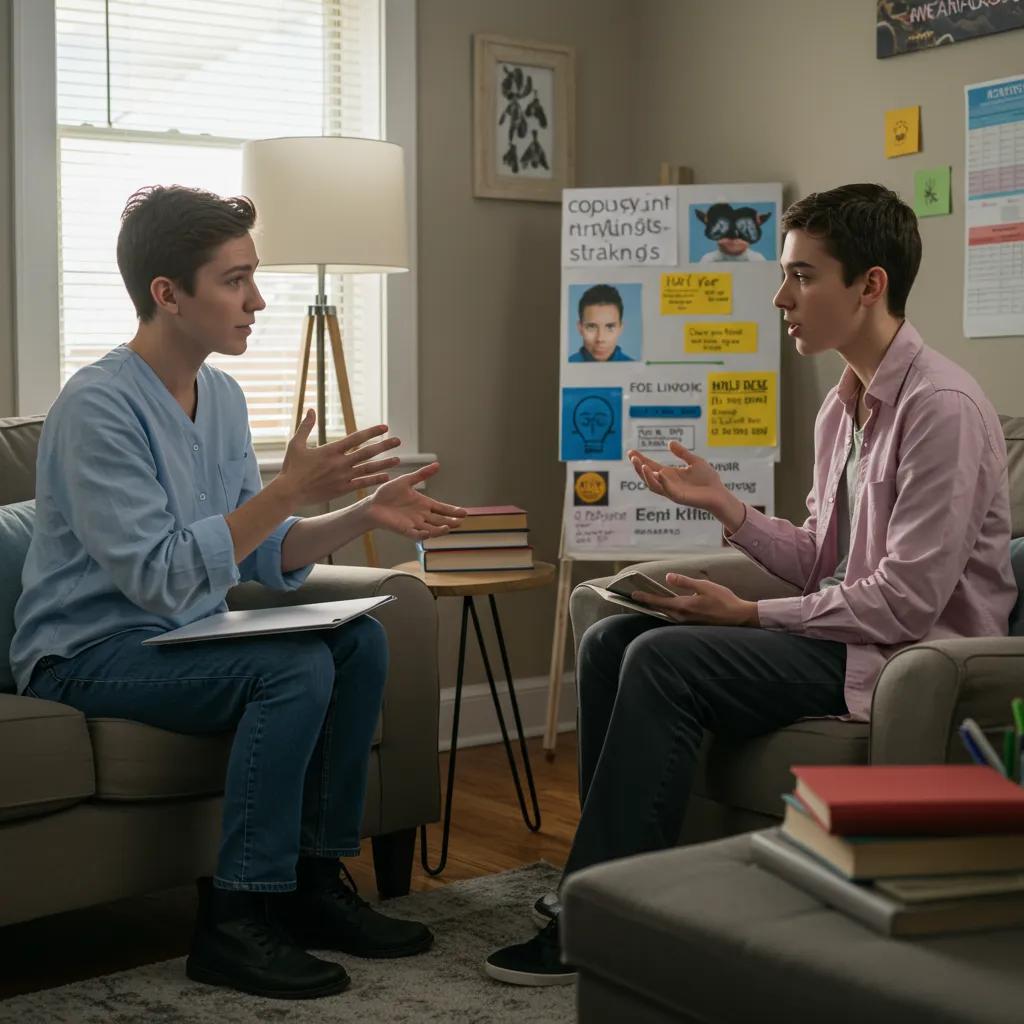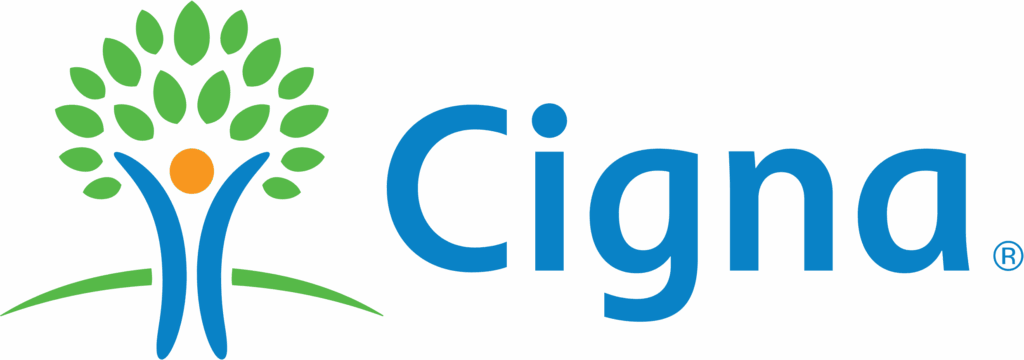
Teen Intensive Outpatient Programs (IOPs) provide focused mental health treatment that balances clinical intensity with the ability for adolescents to remain at home and continue school. This guide explains what a teen IOP is, how it supports mental health, which conditions it treats, and practical steps parents can take when considering programs. Many families face the dilemma of needing more than weekly therapy but less than 24/7 care; IOPs bridge that gap by offering structured group, individual, and family therapy combined with skill-building and medication management. The article maps program components, key benefits, condition-specific adaptations, decision checkpoints for parents, virtual IOP considerations, provider evaluation questions, insurance basics, and expected outcomes supported by current research. Readers will find clear definitions, example weekly schedules, evidence-aligned therapy mappings, and checklists to use when discussing options with clinicians and school staff. Throughout, terms like teen IOP mental health, adolescent IOP, DBT for teens IOP, and telehealth IOP for adolescents are used to help families navigate treatment choices and outcomes.
A teen Intensive Outpatient Program (IOP) is a structured outpatient level of care that delivers frequent therapy sessions—often several times per week—while allowing adolescents to live at home and attend school. It supports mental health by combining group skill-building, individual therapy, family sessions, and medication management to reduce symptoms and improve functioning. IOPs work through repeated practice of coping skills, peer-supported behavior change, and coordinated psychiatric oversight to lower crisis risk and avoid hospitalization. The next sections break down core components, show how IOP compares to higher levels of care, and clarify typical eligibility and referral pathways.
Programs typically include predictable weekly schedules and multi-disciplinary staff to maintain clinical consistency and school continuity. To illustrate typical session patterns for providers and families, the table below lists common program components with frequency and provider type.
IOP components and typical delivery:
| Component | Frequency / Duration | Typical Provider |
|---|---|---|
| Group therapy | 2–4 times/week, 60–90 minutes | Licensed therapist / group facilitator |
| Individual therapy | 1 time/week, 30–60 minutes | Licensed clinician (LPC, LCSW) |
| Family sessions | 1–2 times/month or weekly as needed | Family therapist / clinician |
| Medication management | As scheduled (monthly/biweekly) | Psychiatrist / psychiatric nurse practitioner |
| Skill-building modules | Weekly integrated into groups | DBT/CBT-trained clinicians |

Core IOP components combine evidence-based therapies delivered in regular group and individual formats to produce measurable symptom relief and functional gains. Group therapy targets social learning and repeated practice of skills such as emotion regulation, distress tolerance, and interpersonal effectiveness using DBT and CBT modules. Individual therapy personalizes treatment goals, applies motivational interviewing where needed, and monitors safety and progress; clinicians adjust interventions based on weekly assessments. Family therapy ties home and clinical work together, improving communication and supporting relapse prevention, which leads into how IOP differs from other care levels.
Understanding these components prepares families to compare IOP structure with more or less intensive options and to ask about session composition during intake calls.
IOP differs from PHP and residential care primarily in intensity, setting, and the degree of daily supervision provided to adolescents. A Partial Hospitalization Program (PHP) resembles a daytime hospital with full-day treatment and higher staffing ratios, while residential treatment centers (RTCs) provide 24/7 living and therapeutic environments for severe or unsafe cases. IOP is appropriate when adolescents need more support than weekly outpatient therapy but do not require round-the-clock monitoring, allowing continuity with school and family life. Knowing these level-of-care distinctions helps parents weigh the right balance of safety, intensity, and disruption to daily routines.
Families should consider symptom severity, recent crises, and functional impairment when choosing among outpatient therapy, IOP, PHP, or residential treatment.
Eligibility for teen IOP typically includes adolescents experiencing moderate to severe symptoms that impair daily functioning but who do not require inpatient hospitalization or 24/7 supervision. Common clinical indications include escalating mood symptoms, repeated self-harm with no immediate need for inpatient care, substance use with functional decline, or trauma-related symptoms disrupting school and family. Referral pathways include primary care providers, outpatient clinicians, school counselors, emergency departments, and self-referral after initial assessments determine safety and appropriateness. Families should expect a clinical intake that assesses risk, diagnoses, prior treatment response, and coordination needs with schools or pediatric providers.
Knowing referral routes and assessment expectations helps caregivers prepare documentation and school reports prior to intake.
An adolescent IOP produces clinical and functional benefits by combining frequent therapeutic contact with real-world practice, helping teens stabilize symptoms while maintaining life roles. The program model emphasizes coping skills, peer learning, and family systems work, which together reduce hospitalization risk and improve school attendance and social functioning. IOPs also offer flexible scheduling to preserve academic progress and provide structured transitions back to lower levels of care. Below is a concise comparison of common benefits with attributes and expected values.
Benefits breakdown:
| Benefit | Impact | Example Outcome |
|---|---|---|
| School continuity | Maintains attendance and credits | Reduced absenteeism, fewer grade drops |
| Skill-building | Increases coping and emotion regulation | Better crisis management, fewer ED visits |
| Peer support | Normalizes experience and models recovery | Improved social re-engagement |
| Family involvement | Strengthens support and adherence | Improved symptom monitoring, relapse prevention |
The combination of clinical work and daily-life application supports both short-term stabilization and longer-term functional gains for adolescents.
IOP maintains school and home balance by scheduling sessions around academic commitments and coordinating with school staff to support accommodations like IEPs or 504 plans when needed. Programs commonly offer after-school or partial-day schedules so teens can attend classes, complete work, and receive therapeutic treatment without prolonged absences. Clinicians help families develop communication plans with teachers or counselors to monitor progress, request academic adjustments, and reintegrate missed assignments. These practical coordination steps directly reduce educational disruption and support therapeutic gains at home and in school.
Coordination with schools often requires parental consent for communication and may involve the clinician providing documentation to support accommodations.

Peer support inside IOP group sessions reduces isolation and provides social learning opportunities that accelerate skill acquisition and adaptive behavior change. Structured peer groups allow adolescents to practice interpersonal skills under clinician facilitation, receive feedback, and observe peers modeling coping strategies. Peer normalization helps decrease stigma and increases motivation to engage in treatment, especially when combined with evidence-based modules like DBT skills training. Recognizing the role of peers clarifies why groups are a core IOP component and leads naturally to exploring family involvement as the next essential element.
When peer groups are well-facilitated, teens gain both emotional support and practical rehearsal of new behaviors that translate to daily life.
Family involvement enhances adherence, safety, and long-term outcomes by aligning home supports with clinical goals through family therapy, psychoeducation, and coordinated homework activities. Modalities such as family-focused CBT or systemic family therapy improve communication, reduce conflict, and create consistent reinforcement of coping strategies. Families that participate in sessions learn to monitor symptoms, respond to crises, and support relapse prevention, which correlates with reduced rehospitalization and improved school functioning. Practical parent steps include attending scheduled family sessions, reinforcing skill practice at home, and communicating regularly with the treatment team.
Family engagement thus multiplies individual gains and creates a stable environment for sustained recovery, which connects to condition-specific program adaptations.
Teen IOPs address a range of adolescent mental health conditions by tailoring evidence-based therapies and program tracks to specific clinical needs. Common diagnoses treated include anxiety disorders, depressive disorders, trauma-related conditions, substance use disorders (SUD), and eating disorders, with program adaptations for co-occurring conditions. IOPs use modality combinations—CBT for mood and anxiety, DBT for emotion dysregulation and self-harm, TF-CBT for trauma, and integrated counseling plus SUD-specific interventions for substance use. The table below maps conditions to typical IOP therapy approaches and concise evidence notes.
Condition-focused mapping:
| Condition | Typical IOP Therapies | Evidence / Notes |
|---|---|---|
| Anxiety | CBT group modules, exposure practice | CBT shows strong efficacy for adolescent anxiety |
| Depression | CBT, behavioral activation, group support | Short-term symptom reduction often seen in weeks |
| Trauma | TF-CBT, trauma-informed DBT adaptations | Trauma-focused approaches improve PTSD symptoms |
| Substance use | Integrated SUD counseling + family work | Combined behavioral and family interventions help reduce use |
| Eating disorders | Nutritional coordination + therapy | Requires medical monitoring; may need higher care for medical instability |
Tailoring increases effectiveness and informs referral decisions when clinicians assess for specialized tracks or co-occurring disorder care.
IOP effectiveness for anxiety and depression stems from intensive CBT and behavioral activation integrated into group and individual formats that teach cognitive restructuring, exposure strategies, and activity scheduling. Repeated sessions and homework assignments facilitate rapid skill acquisition and measurable symptom reduction, often evident within several weeks of consistent attendance. Group formats provide peer support and opportunities to practice exposures in a social context, enhancing generalization to school and social settings. Families and clinicians track symptom change through standardized measures, allowing treatment adjustments and transition planning to less intensive care as improvements stabilize.
Demonstrated early gains in function and mood often support continued outpatient follow-up after IOP discharge.
Specialized IOPs incorporate trauma-informed care principles, TF-CBT elements, and DBT adaptations that prioritize safety, stabilization, and processing at a pace matched to the adolescent’s readiness. For substance use, integrated tracks combine motivational interviewing, relapse prevention skills, family-based interventions, and concurrent mental health treatment to address co-occurring disorders. These specialized pathways emphasize coordination with medical providers, school staff, and community supports to address the full context of the teen’s needs. Effective specialized care requires trained clinicians and clear protocols for risk management and referral to higher levels of care when needed.
Integrated models increase the likelihood of sustained recovery by addressing underlying trauma or addiction drivers alongside symptom management.
CBT and DBT are adapted to adolescent developmental levels and delivered through modules that focus on concrete skill practice, role-playing, and homework to reinforce learning outside sessions. DBT modules (mindfulness, distress tolerance, emotion regulation, interpersonal effectiveness) are often used in groups to build regulation skills, while CBT focuses on cognitive restructuring and behavioral activation for mood and anxiety. Clinicians use age-appropriate examples, experiential activities, and family components to ensure skills transfer to school and home. Regular measurement of skill competency and symptom change guides treatment pacing and discharge planning.
These adaptations help adolescents acquire practical tools and ensure therapeutic gains are reinforced across settings.
Deciding whether a teen needs IOP involves assessing symptom severity, functional impairment, and response to less intensive treatment; IOP suits adolescents who need frequent, structured therapy but can remain safely at home. Key decision factors include escalating self-harm behaviors without imminent danger, worsening substance use affecting daily life, rapid decline in school performance, or insufficient improvement with weekly outpatient therapy. Families should consult clinicians for an assessment that includes safety evaluation, symptom measures, and discussion of school coordination before referral. The checklist below offers observable markers that prompt an IOP evaluation.
Decision checklist for parents:
After using this checklist, families should seek a formal clinical evaluation to determine the safest and most effective next level of care.
Behavioral and emotional signs warranting IOP assessment include persistent withdrawal, marked changes in sleep or appetite, increased aggression or risk-taking, repetitive self-harm without immediate inpatient needs, and inability to engage in school or social activities. Clinicians distinguish urgent from non-urgent signs by assessing current safety, frequency, and severity; immediate emergency services are indicated for imminent danger. Observable patterns over several weeks—rather than single incidents—often guide referral to IOP when outpatient therapy is insufficient. Identifying these signs early facilitates timely evaluation and reduces the likelihood of hospitalization.
Parents who notice clusters of these behaviors should document changes and communicate with pediatric or mental health providers promptly.
Academic decline often manifests as falling grades, missed assignments, frequent absences, or sudden classroom withdrawal and can be a direct indicator of underlying mood, anxiety, or trauma-related disorders. Teachers and school counselors may report concentration difficulties, disruptive behavior, or social withdrawal; these observations help clinicians assess functional impairment. Families should gather school reports, attendance records, and teacher comments to share during intake to clarify how symptoms affect learning and whether IEP or 504 accommodations are warranted. Coordination between the treatment team and school staff supports academic reintegration and informs IOP discharge planning.
Using school documentation in assessments improves treatment planning and helps secure necessary educational supports.
Parents should consider IOP when weekly outpatient therapy has not produced sufficient symptom relief, when frequent structured support would reduce crisis risk, or when maintaining school and family life is a priority over inpatient placement. IOP is appropriate when adolescents present with moderate to severe symptoms that are manageable in home settings with clinician oversight and when family participation can support treatment goals. Scenarios suited to IOP include repeated but non-imminent self-harm, persistent depression with functional impairment, or substance use that requires structured counseling while preserving schooling. When immediate danger or significant medical instability is present, higher levels like PHP or residential care are more appropriate.
A clinical assessment comparing outpatient progress, safety factors, and functional needs will help determine whether IOP is the right next step.
Virtual teen IOP delivers the same core therapies—group skills, individual sessions, and family work—through secure telehealth platforms, enabling frequent contact without travel. It works by using licensed clinicians trained in teletherapy, privacy safeguards, and adapted group facilitation techniques to maintain engagement and therapeutic alliance. Advantages include increased access for rural families, reduced transportation barriers, and the ability to involve multiple family members across locations. The next subsections contrast virtual and in-person dynamics, describe access benefits, and outline challenges and success factors for virtual models.
Virtual delivery requires attention to platform privacy, clinician telehealth competency, and contingency plans for emergencies to ensure safety and efficacy.
Virtual IOP differs from in-person programs primarily in modality of interaction, group dynamics, and logistical requirements; clinicians adapt activities for screen-based engagement and monitor nonverbal cues via video. In-person groups allow more experiential and supervised practice of skills, while virtual groups may offer greater scheduling flexibility and broader clinician access. Safety procedures vary: virtual programs must have clear emergency contacts, local crisis plans, and parental involvement protocols to respond to acute risk. Families should weigh engagement preferences, technology reliability, and the ability to create a private space at home when choosing between virtual and in-person options.
Understanding these contrasts helps families select the format that best fits clinical needs, logistics, and adolescent comfort with digital interaction.
Telehealth extends access by reducing geographic and transportation barriers, connecting teens to specialized clinicians not available locally, and offering flexible scheduling that can better align with school hours. Adolescents often report greater comfort with digital formats, which can increase initial engagement and retention in treatment. Telehealth growth in recent years has expanded provider capacity and normalized remote therapeutic work, allowing continuity for families during relocations or scheduling constraints. Identifying reliable providers with telehealth experience and clear privacy practices improves the likelihood of successful virtual treatment.
These access benefits make virtual IOP a viable option for many families when properly implemented and supported.
Virtual IOP faces challenges including technology failures, privacy concerns in home environments, and potential reductions in group cohesion, but success factors mitigate these risks through clinician training, strong onboarding, and clear family agreements about confidentiality. Programs that succeed use interactive digital tools, structured facilitation techniques to encourage participation, and backup plans for connectivity issues to maintain continuity. Parental involvement in creating private spaces and establishing emergency protocols is essential for safety and engagement. When these success factors are in place, virtual IOP can match in-person outcomes for many adolescents and increase overall access.
Addressing these operational details upfront improves engagement and helps maintain therapeutic momentum across sessions.
Finding the right teen IOP involves evaluating clinical approaches, staff qualifications, program logistics, and how providers handle safety and school coordination. Parents should prepare to ask about evidence-based therapies offered, clinician licensure and training, staffing ratios, crisis procedures, and how the program measures outcomes. Insurance and financial logistics also influence access, so verifying coverage and authorization processes early is important. The following H3s list suggested provider questions, insurance steps, and family resources to support the search and selection process.
Being systematic and using consistent questions during intake calls helps families compare programs objectively and prioritize fit for their teen.
Before enrollment, parents should ask targeted clinical and logistical questions to assess program quality, safety, and fit for their teen; the list below groups essential inquiries for intake conversations.
These questions give families a structured way to evaluate clinical rigor, safety, logistics, and coordination, enabling informed selection among available programs.
Insurance coverage for IOP varies; parents should verify whether their plan includes behavioral health benefits, whether prior authorization is required, and what out-of-pocket costs to expect. Typical steps include contacting the insurer to confirm in-network providers, requesting prior authorization if needed, and obtaining documentation from clinicians that supports medical necessity. If insurance coverage is limited, families can ask providers about sliding scale fees, payment plans, or community resources that assist with costs. Understanding these processes before intake reduces financial surprises and speeds access to appropriate care.
Early verification empowers families to plan for coverage limitations and pursue alternative financial supports if required.
Families can draw on national and local resources for information, crisis support, and caregiver guidance; key authorities include research and guideline organizations that offer family-facing materials and treatment standards. Local school counselors, parent support groups, and community mental health centers provide practical supports for school coordination, respite, and ongoing education. Hotlines and crisis lines offer immediate assistance when safety concerns escalate, while professional associations publish guidance on evidence-based treatments for adolescents. Leveraging these resources strengthens family capacity to support their teen during and after IOP participation.
Combining clinician guidance with external resources enhances continuity of care and family resilience throughout treatment.
Teen IOPs aim for measurable reductions in symptoms, improved school function, and lower hospitalization rates by teaching skills, stabilizing risk, and engaging families in relapse prevention. Outcome metrics commonly tracked include symptom scales for depression and anxiety, school attendance, crisis visits, and rates of step-down to lower levels of care. Research and guideline organizations endorse intensive outpatient approaches as effective when evidence-based modalities are implemented with fidelity and family involvement. The following sections summarize mechanisms for long-term resilience, evidence highlights, and anonymized vignettes illustrating positive trajectories.
Understanding likely outcomes helps families set realistic goals and collaborate on discharge and aftercare planning.
IOP promotes long-term recovery by consolidating coping skills, strengthening family systems, and establishing peer supports that persist after discharge; these elements form a protective network against relapse. Skill consolidation occurs through repeated practice in group contexts and homework assignments that generalize skills to school and home. Family engagement provides ongoing monitoring and reinforcement, while community supports and school accommodations help sustain academic and social functioning. Post-IOP maintenance often includes outpatient therapy and booster sessions to preserve gains and address emerging stressors.
These mechanisms collectively enhance resilience by equipping adolescents with tools, supports, and structured plans for future challenges.
Current research and clinical guidelines indicate that structured, evidence-based IOPs reduce symptom severity and decrease acute care utilization when programs implement CBT, DBT, family interventions, and integrated substance use treatments. Professional organizations and recent studies (current to 2025) emphasize measurement-based care and family inclusion as predictors of better outcomes. Commonly reported improvements include reduced depressive and anxiety symptoms within weeks, fewer emergency visits, and improved school attendance, although outcomes depend on fidelity, provider training, and care coordination. Families should look for programs that track outcomes and use validated measures to document progress.
These evidence signals help families prioritize programs with demonstrated effectiveness and transparent outcome monitoring.
Below are anonymized vignettes that illustrate typical positive outcomes from teen IOP participation while protecting identities and emphasizing consent and ethics.
The following citation highlights the effectiveness of Dialectical Behavior Therapy (DBT) within intensive outpatient programs for adolescents struggling with suicidal ideation and self-harm.
Dialectical Behavior Therapy Intensive Outpatient Programs for Suicidal and Self-Harming Adolescents
This chapter examines the implementation of standard dialectical behavior therapy (DBT) within intensive outpatient programs (IOPs) for adolescents exhibiting suicidal ideation and self-harm behaviors. The authors review two established adolescent DBT IOP models: (1) the Children’s Health Council/Stanford Children’s Health RISE IOP, and (2) the DBT IOP at Children’s Hospital of Orange County. The discussion includes statistical data and relevant information pertaining to suicide and non-suicidal self-injury (NSSI). Beyond program descriptions, the authors address the challenges encountered and lessons learned during the development and operation of these IOPs, offering valuable insights for professionals aiming to establish DBT IOPs for adolescent populations.
Adolescent dialectical behavior therapy intensive outpatient programs, A Atasuntseva, 2022
These vignettes show how targeted interventions, family engagement, and consistent program attendance can produce meaningful improvements for diverse adolescent presentations.
This guide has outlined what teen IOPs are, their core components, condition-specific adaptations, decision criteria for families, virtual program considerations, evaluation questions for providers, and expected outcomes supported by current practice. Families and clinicians can use the checklists, tables, and questions here to make informed choices aligned with the adolescent’s clinical needs and life context.
We are 100% in Network Provider. Most of our clients pay $0 out of pocket.



